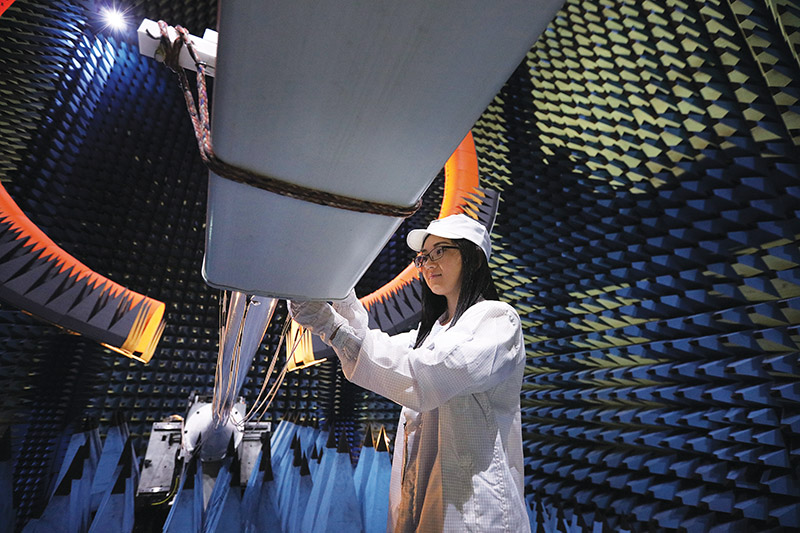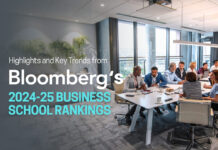Ask any executive how they would like the ideal work force to act and many of them would probably say something like” “Wherever I would go in the company, regardless of who I would talk to, people would be creative and excited enabling a culture where new ideas continuously surface and are put in practice.” Sounds familiar? Probably not. And, it should not be a surprise as we live in a world that is constantly changing and thus challenging our traditional ways of working. Indeed, any company today realizes that it is necessary for them to stimulate and explore new ways of thinking to ensure that one can adapt and deal with any new situation (De Cremer, 2020a).
A premium on curiosity
All of this makes that in today’s business world a premium is put on developing a sense of curiosity (Horstmeyer, 2019). Indeed, many breakthrough discoveries and remarkable, yet effective, innovations have in common that they are a result of curiosity. Being curious allows to think out of the box and question one’s own ways of working with the aim to learn, improve and ultimately innovate. The famous physician Albert Einstein once said” “I have no special talent. I am only passionately curious.” So, in an interesting fashion the skill of curiosity makes that people more easily challenge the status-quo and in doing so help a company act in more agile ways when change and disruption is taking place.

If all of the above is the case, then why is so often noted that having a curious work force seems to be more of an exception rather than the default? Why is it that most employees experience difficulties when they want to rock the boat by trying to introduce alternative perspectives and other ways of working? How come that most employees feel that being too curious about their job and what would be possible is often not supported with the result that over time people ask less rather than more questions? These questions underscore the fact that the ideal work force we all would like to see seems indeed too often an “ideal” but unfortunately not reality. The bottom-up forces that so many of us would like to see at work often are lacking, which leaves us with the question, who can be seen as most responsible for trying to initiate and create a work setting where curiosity is indeed encouraged and new ways of thinking are implemented?
The simple answer to this question is that if you want your organization to rock the boat, be creative and curious to ensure that company responses are agile enough to promote innovation, leaders will have to design their organizations and shape the work culture in such ways that those values are seen as being the primary ones to pursue. It is such work cultures that in any industry will stimulate new ways of working and being creative with products and existing knowledge. If leaders endorse a curious attitude and are seen to act in agile ways, the mindset of change and innovation will follow. Indeed, leaders are supposed to lead by example if they want things to change (De Cremer, 2013). Being innovative and agile as an organization then also requires that leaders are at the fore showing that they approach solutions and challenges from different angles and perspectives before taking actions. And, it will be because of such attitude that they will help their work force to look at problems in different ways than before as well.
In this piece, I focus on a case study in which a leader was able to enhance the value of knowledge that was already present within the company by adopting a different perspective allowing to broaden the kind of stakeholders that could benefit from that knowledge. The case study is one that took place in the company Huawei. This Chinese telecommunication company was founded by Ren Zhengfei in 1987 in Shenzhen and employs more than over 180 000 employees (Tao, De Cremer, & Chunbo, 2017). Despite geo-political struggles in the last few years, the company is still a global giant operating in more than 170 countries and regions and serving more than three billion people (excluding the US market). In the fiscal year of 2020 Huawei’s revenue reached CNY891,368 million (US$136,717 million) and CNY64,649 million (US$9,916 million) in net profit (in 2019 revenue reached CNY858,833 million and CNY62,656 million in net profit)
A dominant focus on customers
Huawei refers to the their workforce responsible for promoting innovation as “knowledge” workers and prides itself in having designed a work culture with the appropriate incentive systems to ensure that the knowledge that the company produces is primarily serving their customers (De Cremer, 2017; De Cremer & Tao, 2016). Indeed, Huawei’s philosophy is to connect customers in ways that will fulfil their dreams and every intellectual effort within the company is focused on that goal (De Cremer & Zhang, 2016). To achieve this goal, Ren Zhengfei has installed a culture where employees are constantly reminded that the stakeholder that matters the most is the customer. As Ren Zhengfei once famously said that “Everyone in the company must turn their eyes to their customers and their back to their bosses.” The primary focus on customers is legendary and many stories validate it. For example, when an institutional investor delegation led by Stephen Roach, chief economist for Morgan Stanley, visited Huawei (De Cremer & Tao, 2015), Ren Zhengfei asked Fei Min, his executive vice president of R&D, to entertain the delegation. Later, Roach expressed his disappointment by saying that Ren Zhengfei, “was rejecting a team with $3 trillion.” Ren Zhengfei explained his decision by stating that he is always happy to meet any customer in person, no matter how small they were, but that Roach was not a customer.

The above illustrates clearly that the dominant perspective used in Huawei, across any department and team, is that of the customer. As rotating CEO Guo Ping mentioned in 2014: “We should not aim to simply please our customers. To be accountable for customer satisfaction, we need to take their perspectives into consideration, and then draw clear lines for product quality and innovation that we will not cross.” So, the perspective of the customer is then also likely to direct any thinking and decision regarding the use of knowledge and innovation.
Enlarging the end-user perspective: The WeLink case
While it’s hard to imagine that any company would challenge the idea that “customer centricity” is a primary strategy to be followed, in this case, it did lead to a situation where the knowledge being developed in the company was not used in the most optimal ways and as such (initially) missed out on developing other innovative solutions. Specifically, Huawei’s ambition to connect people led the company to create the most advanced technologies that served customers well in terms of the AI used in cell phones, the use of cloud space, and their telecommunication networks. However, it’s fair to note that by only adopting the perspective of what would be useful to the customer, Huawei’s knowledge workers were blind to another stakeholder that could also benefit significantly from the tech knowledge that was being developed. And, that stakeholder was the Huawei employee him/herself. This observation is unlikely to have been a surprise to the company, because rotating chairman Eric Zhu already referred to this problem by noting that the “biggest waste in Huawei is knowledge.” But, despite this important statement nothing really changed, until a former Huawei president in Western Europe, Kevin Tao, returned to Huawei’s headquarters in Shenzhen. It was indeed a Huawei executive, with skills to lead across cultures, and who had learned to look at opportunities from different angles, who installed a mindset that helped to remove the blindspot of solely using the customer perspective to assess the innovation potential of the knowledge being developed.
His biggest contribution in this process was that he extended the “user” view when it came down to Huawei knowledge and products. In fact, in a multinational with more than 180 000 employees, communication is everything. So, using technology to connect people should then not only bring benefits to customers, but also to Huawei’s own work force. Kevin Tao made clear to the engineers that the technology that they were developing could equally serve the interests of employees by allowing teams to connect better rather than working in silos and as such exchange business expertise and knowledge in quicker and faster ways. Serving employee’s needs as a new perspective to look at the innovative potential of the knowledge generated led in 2017 to the development of WeLink, a fully connected platform, that constituted a first step in Huawei’s digital office transformation.
The aim of Huawei’s digital office transformation project is to optimize team and cross-enterprise collaboration, and a digital platform like WeLink helps in doing so by making collaborative efforts more simple, secure, and efficient by using the most advanced telecommunication technologies. By using services, online mediums, and office devices to transfer and communicate information, WeLink is an integrative technological solution by making use of AI, IoT and cloud application. This integrative solution as such represents the perfect example of a company bringing its technology applications together into an innovative product that empowers employees. In addition, WeLink is also a testimony to the importance of innovation being stimulated by working across silos as the project involved bringing engineers, data scientists and business experts from different departments (HR, finance, marketing, sales and so forth) together.

Conclusion
Promoting curiosity to facilitate identifying multiple uses of knowledge and products already available is an important ability for any company when dealing with change and disruption. The establishment of WeLink as a digital platform in the office of tomorrow is an example illustrating that existing knowledge can promote innovative solutions when it’s evaluated and assessed from a different perspective than the default one that is usually in place. For this change in perspective-taking to happen, we need leaders who inspire and install a mindset of being curious and to look at existing knowledge from new angles to arrive at new solutions. To achieve such mindset, it will be important for leaders not only to illustrate the importance of curiosity and learning motivations, but at the same time also be willing to create a psychological safe climate where trust exists that experimenting and sometimes failing in new and creative projects will not be penalized by the company.
About the Author

David De Cremer is a Provost’s chair and professor in management and organizations at NUS Business School, National University of Singapore. He is the founder and director of the corporate-sponsored “Centre on AI Technology for Humankind” at NUS Business school. Before moving to NUS, he was the KPMG endowed chaired professor in management studies and current honorary fellow at Cambridge Judge Business School. He is also a fellow at St. Edmunds College, Cambridge University. He is named one of the World’s top 30 management gurus and speakers in 2020 by the organization GlobalGurus, one of the “2021 Thinkers50 Radar list of 30 next generation business thinkers”, nominated for the Thinkers50 Distinguished 2021 award for Digital Thinking (a bi-annual gala event that the Financial Times deemed the “Oscars of Management Thinking”) and included in the World Top 2% of scientists (published by Stanford). He is a best-selling author with his co-authored book (with Tian Tao and Wu Chunbo) on “Huawei: Leadership, Culture and Connectivity” (2018) having received global recognition. His recent book “Leadership by Algorithm: Who leads and who follows in the AI era?” (2020) received critical acclaim worldwide, was named one of the 15 leadership books to read in Summer 2020 by Wharton and the kindle version of the book reached the no. 1 at amazon.com. His latest book is “On the emergence and understanding of Asian Global Leadership”, which was named management book of the month July (2021) by De Gruyter. His website: www.daviddecremer.com
References
- De Cremer, D. (2013). The proactive leader: How to overcome procrastination and make a bold decision now. Palgrave Macmillan.
- De Cremer, D. (2017). Making customer centricity work for your company. The European Financial Review. October-November, 64-67.
- De Cremer, D. (2020). What makes you an effective leader in crisis situations? The European Business Review, June-July, 29-30.
- De Cremer, D., & Tao, T. (2015). Leading Huawei: Seven leadership lessons of Ren Zhengfei. The European Business Review, September/October, 30-35.
- De Cremer, D., & Tao, T. (2016). Creating Effective Organizational Systems through Experimenting with Human Nature. The European Business Review, November/December, 6-10.
- De Cremer, D. & Zhang, J. (2016). Why Focus-based Leadership is important to Huawei’s Business Strategy. The European Business Review, May/June, 40-43.
- Horstmeyer, A. (2019). How VUCA is changing the learning landscape – and how curiosity can help. Development and Learning in Organizations, 33(1), 5-8.
- Tao, T., De Cremer, D., & Chunbo, W. (2017). Huawei: Leadership, culture and connectivity. Sage Publishing.







![Deconstructing the Myth of Entrepreneurship iStock-2151090098 [Converted]](https://www.europeanbusinessreview.com/wp-content/uploads/2024/09/iStock-2151090098-Converted-218x150.png)



























